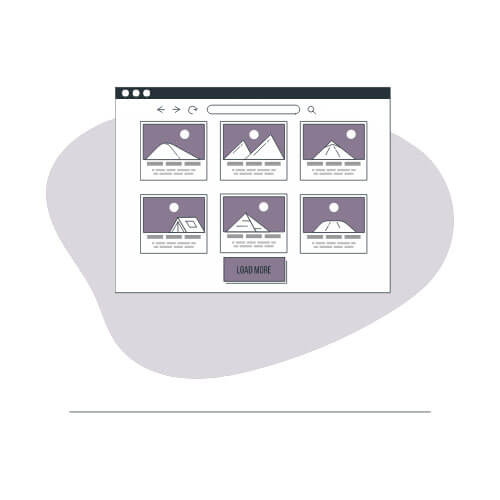Crafting a Collaborative SWOT Analysis
In the competitive landscape of business, understanding your team or organization’s strengths, weaknesses, opportunities, and threats (SWOT) is pivotal for strategic planning and smart decision-making.
A SWOT analysis offers a clear, structured way to evaluate these aspects, aiding teams in leveraging their assets, addressing challenges, improving strategies, and seizing opportunities. This guide outlines how to create a collaborative SWOT analysis, ensuring a comprehensive understanding of your business landscape.
The essence of SWOT Analysis
A SWOT analysis is a strategic tool that assists teams and organizations in identifying internal strengths and weaknesses, along with external opportunities and threats. This framework helps in strategizing for growth, addressing challenges, and capitalizing on opportunities. The collaborative aspect of conducting a SWOT analysis ensures that diverse perspectives are considered, leading to a more in-depth and nuanced understanding of the business context.
What to Analyze in a SWOT Analysis
Each category—Strengths, Weaknesses, Opportunities, and Threats—focuses on different aspects of your organization and the external environment.
Here are some initial ideas of what to examine:
Strengths:
Strengths refer to the internal attributes and resources that give your organization a competitive advantage.
- Brand reputation
- Proprietary technology
- Workforce skills and expertise
- Financial stability
- Customer loyalty
- Product or service innovation
- Leadership effectiveness
- Internal communication
Weaknesses:
Weaknesses are internal factors that may hinder your organization’s performance and growth.
- Resource availability
- Expertise and skill gaps
- Process efficiency
- Internal communication
- Employee retention
- Product or service range
- Market awareness
- Technology infrastructure
Opportunities:
Opportunities are external factors that your organization can leverage for growth and success.
- Market trends and developments
- Technological advancements
- Consumer preference shifts
- Market expansion possibilities
- Potential strategic partnerships
- Industry regulatory changes
- Demand growth for products/services
- Innovations in technology
Threats:
Threats are external challenges that could negatively impact your organization’s performance.
- Competitive landscape
- Regulatory environment
- Economic conditions
- Technological disruptions
- Supply chain stability
- Media and public perception
- Customer preference changes
- Market saturation levels
Creating a Collaborative SWOT Analysis
Start by explaining the purpose of the SWOT analysis: to identify and assess the strengths, weaknesses, opportunities, and threats facing your team or organization. Emphasize the importance of open, honest feedback and the value of diverse perspectives to gain a comprehensive understanding.
When using a digital tool for this analysis, follow these recommendations:
- Set up your Collaborative SWOT Analysis interactive tool
- Create a categorized question including different categories for Strengths, Weaknesses, Opportunities, and Threats.
- Invite diverse participants:
- Include team members from different departments and levels within the organization.
- Ensure that everyone understands the importance of honest and constructive feedback.
- Facilitate Thoughtful Reflection:
- Encourage participants to reflect on recent successes and challenges.
- Provide prompts or questions to guide their thinking, such as:
- What are our key advantages?
- Where do we see consistent obstacles?
- What external trends could benefit us?
- What external risks should we prepare for?
- Promote Ongoing Engagement:
- Allow participants to enter their thoughts asynchronously, giving them time to consider their input.
- Schedule a follow-up meeting to discuss and refine the entries collaboratively.
- You can use the Moderate feature to hide responses and only leave your SWOT chart with the most relevant points, or add any additional reflections as you go.
- Focus on the solutions
- When discussing weaknesses and threats, steer the conversation towards potential solutions and strategies for improvement.
SWOT Action Planning
Following the analysis, develop an action plan to leverage strengths, address weaknesses, seize opportunities, and mitigate threats. Assign responsibilities and set deadlines to ensure accountability and progress.
A collaborative SWOT analysis is more than a strategic exercise; it’s a catalyst for team engagement, strategic clarity, and focused action. By systematically examining internal and external factors, teams can develop a robust strategy that aligns with their strengths and addresses the dynamic challenges of the business environment. Remember, the true value of a SWOT analysis lies in the actions it inspires and the collective effort to turn insights into outcomes.
Enhancing Your SWOT Analysis with interactive elements
To make your SWOT analysis even more effective, consider incorporating interactive elements that can engage your team and provide deeper insights. The great thing about using Questiory to create your own Collaborative SWOT Analysis, or SWOT Analysis template is that you can use a wide variety of interactions and visualizations to build exactly what you need, in your own unique way.
Here are some ideas you could consider adding:
- Sprint Overview: Begin with a brief summary of recent achievements and performance to set the stage for analysis. Check our Sprint Retrospective example for more info on how to build this interactive experience.
- Success highlights: Celebrate achievements with a focus on strategies and behaviors that led to success.
- Challenges and solutions: Foster a problem-solving atmosphere by discussing obstacles and brainstorming potential solutions.
- Process improvements: Assess team workflows for efficiency gains, encouraging suggestions for methodological enhancements.
- Innovative ideas: Dedicate space for team members to propose new ideas or enhancements that could impact future projects positively.
- Action plan development: Detail actionable steps for improvement, assigning responsibilities and deadlines to ensure follow-through.
- Feedback loop closure: Review the outcomes of previous actions to promote accountability and continuous learning.
- Future focus discussion: Encourage dialogue on long-term goals and visions to align team efforts toward a common future.
Incorporating these slides into your SWOT analysis can transform it from a standard review into a dynamic, engaging strategy session that resonates with your team, fostering a deeper understanding and more actionable outcomes.




